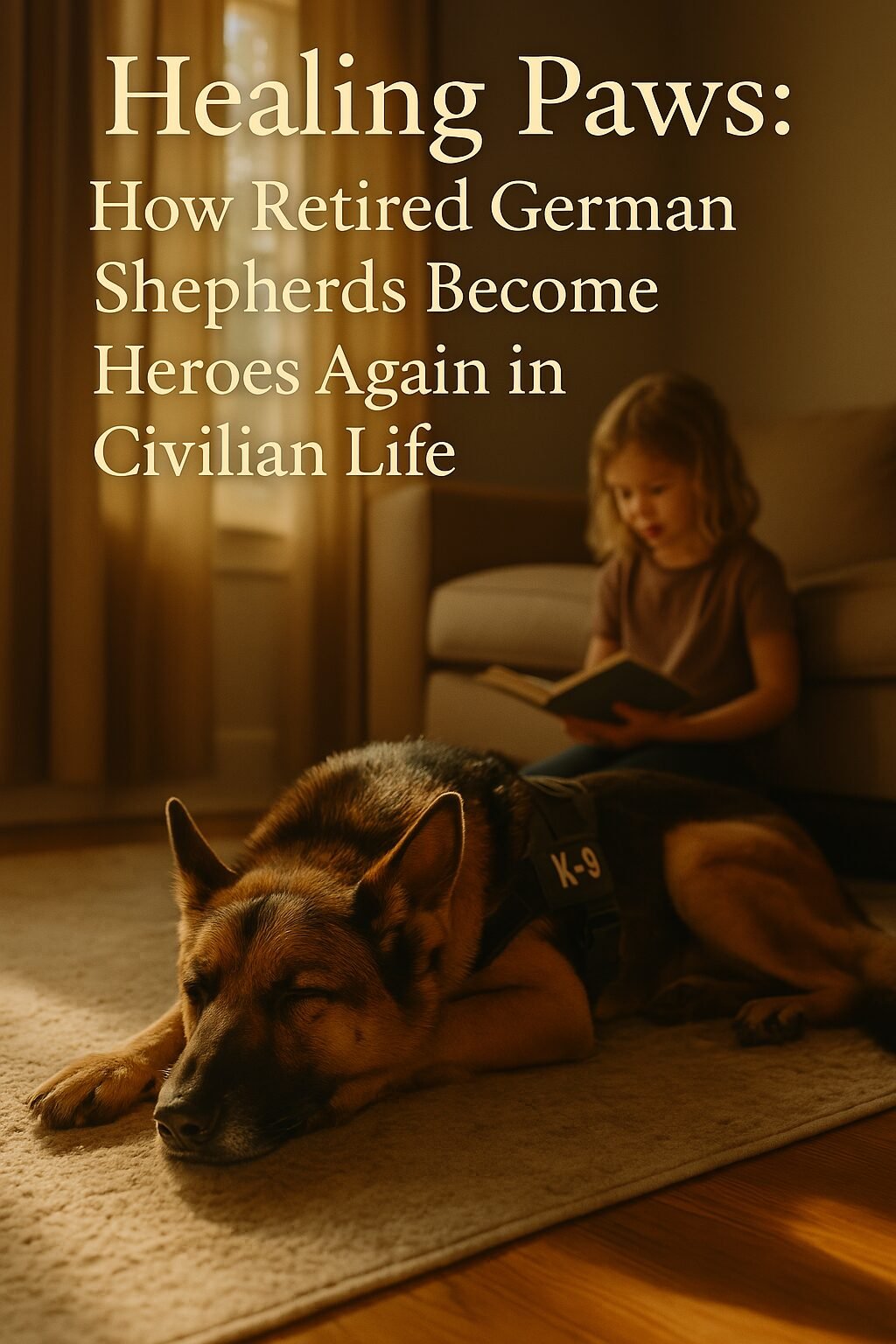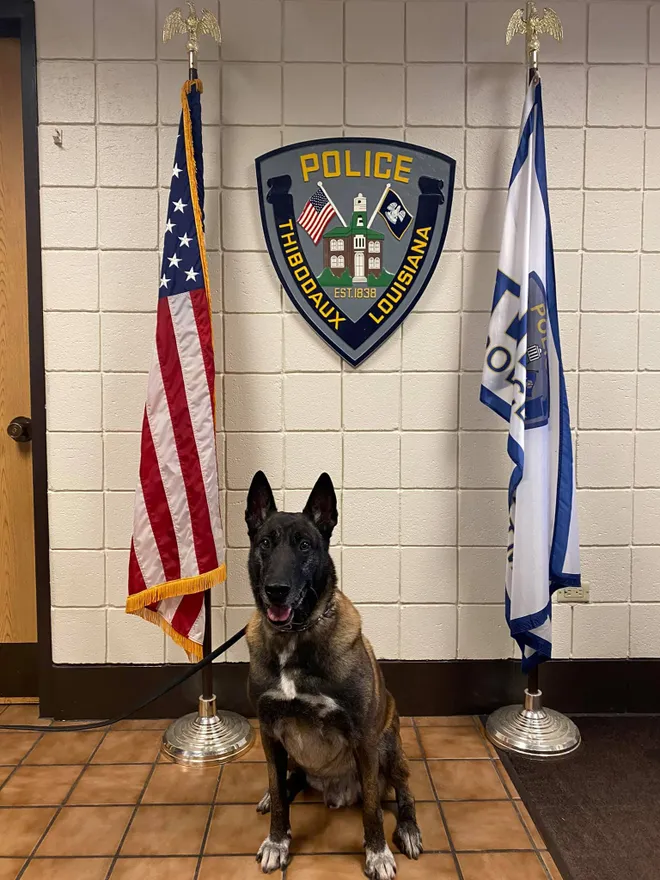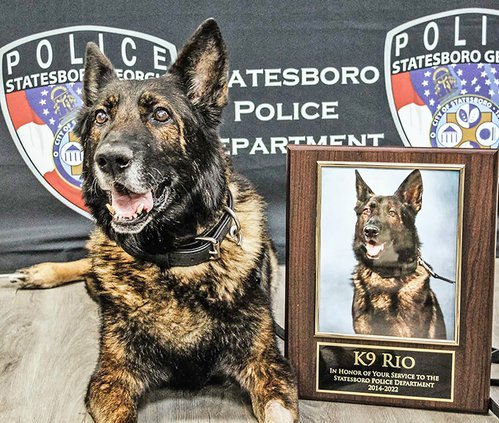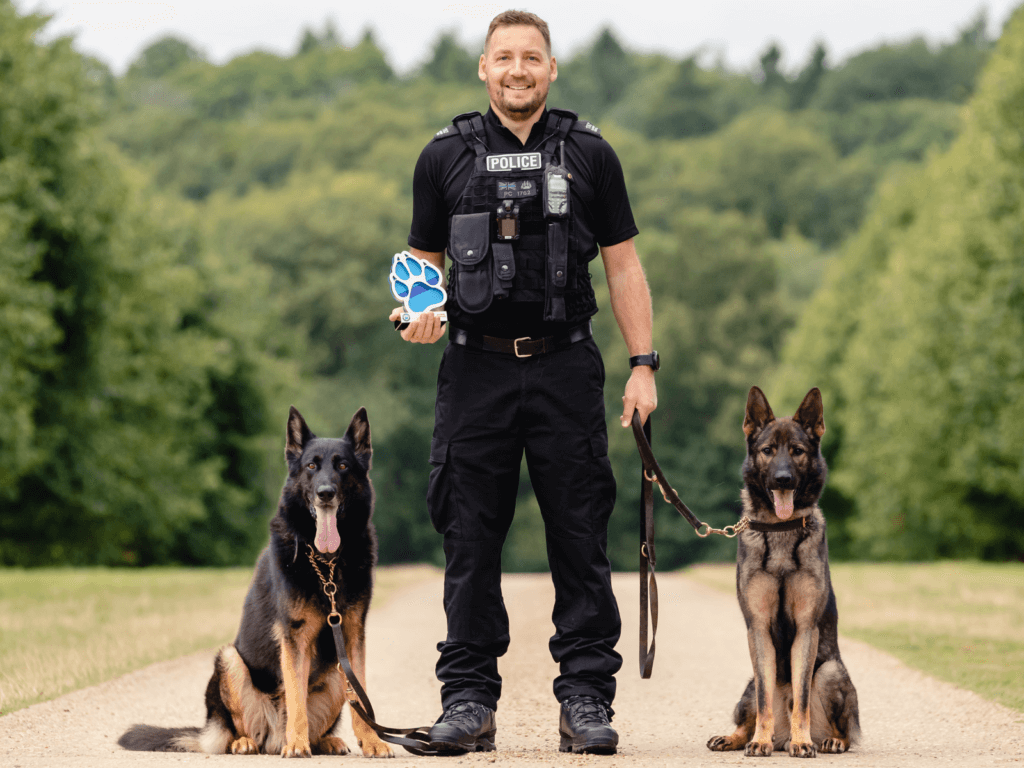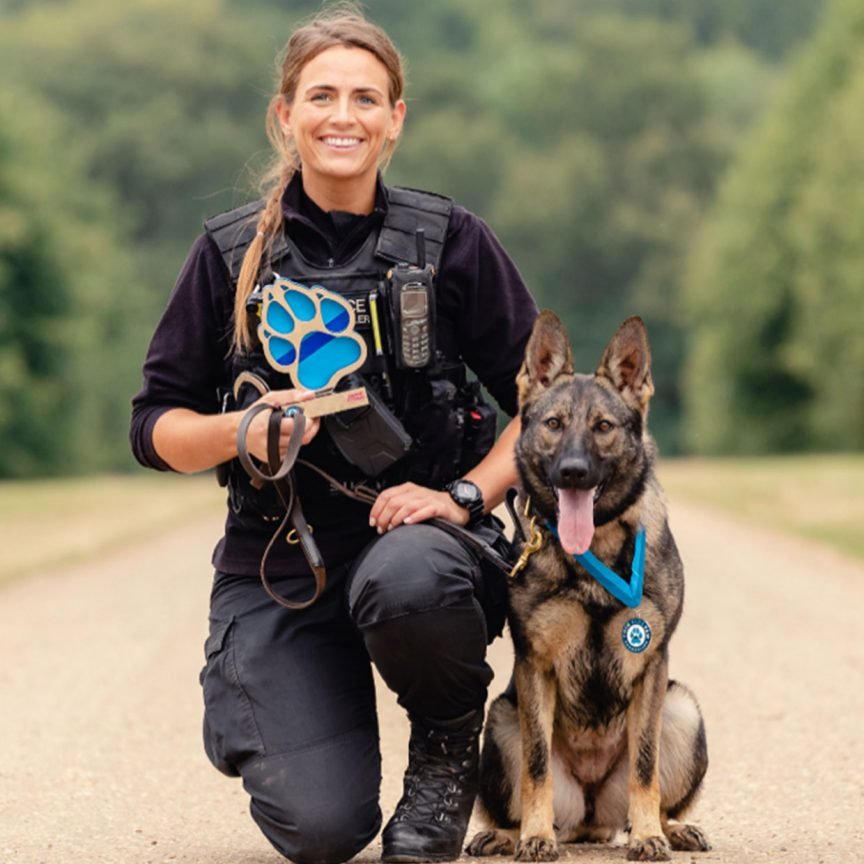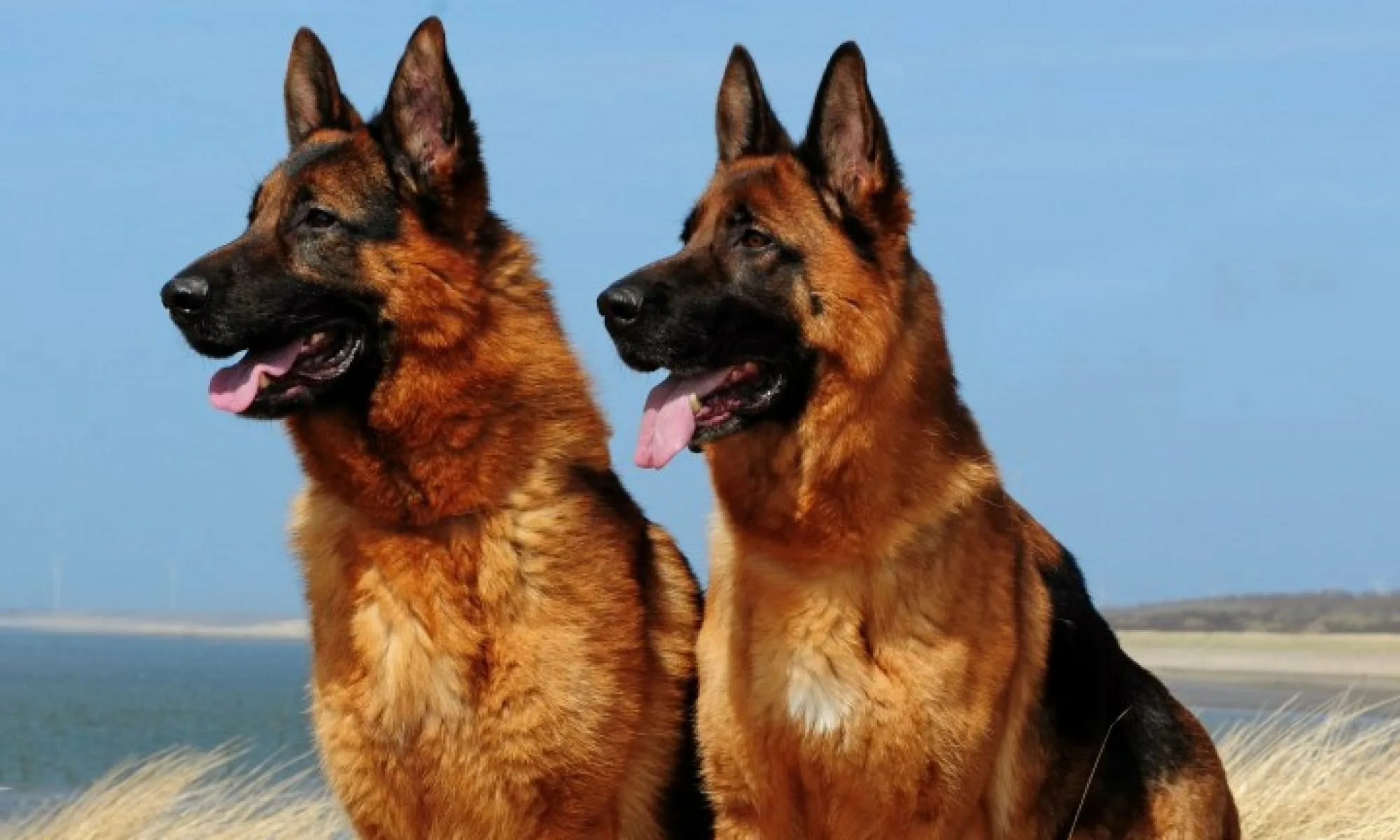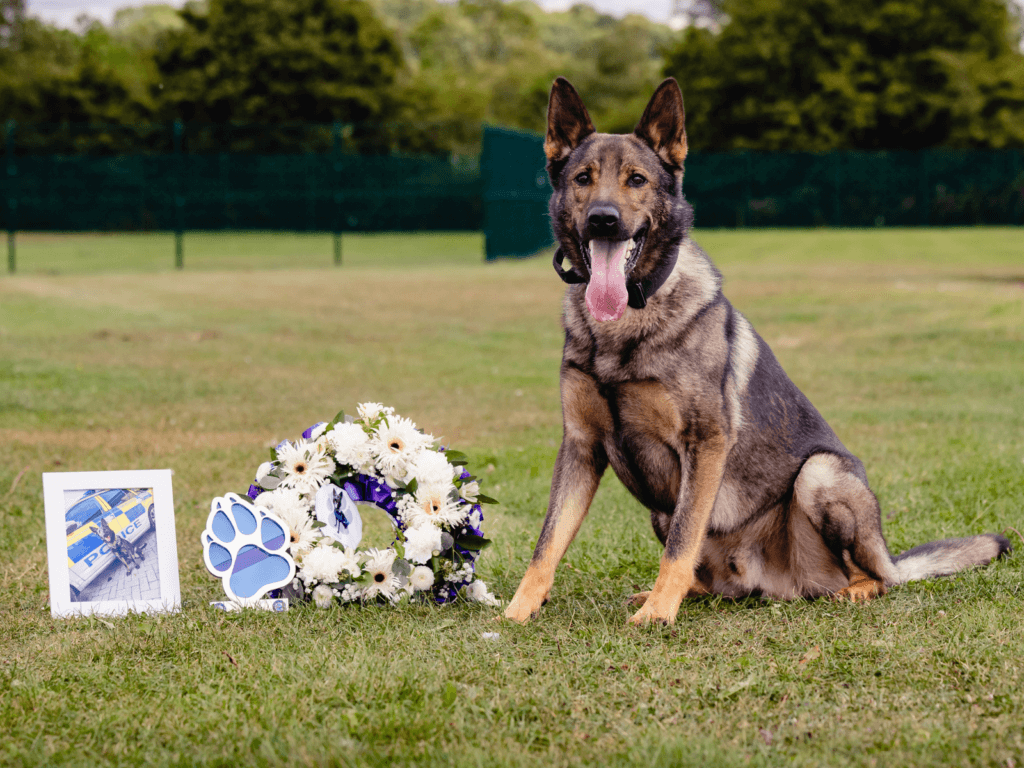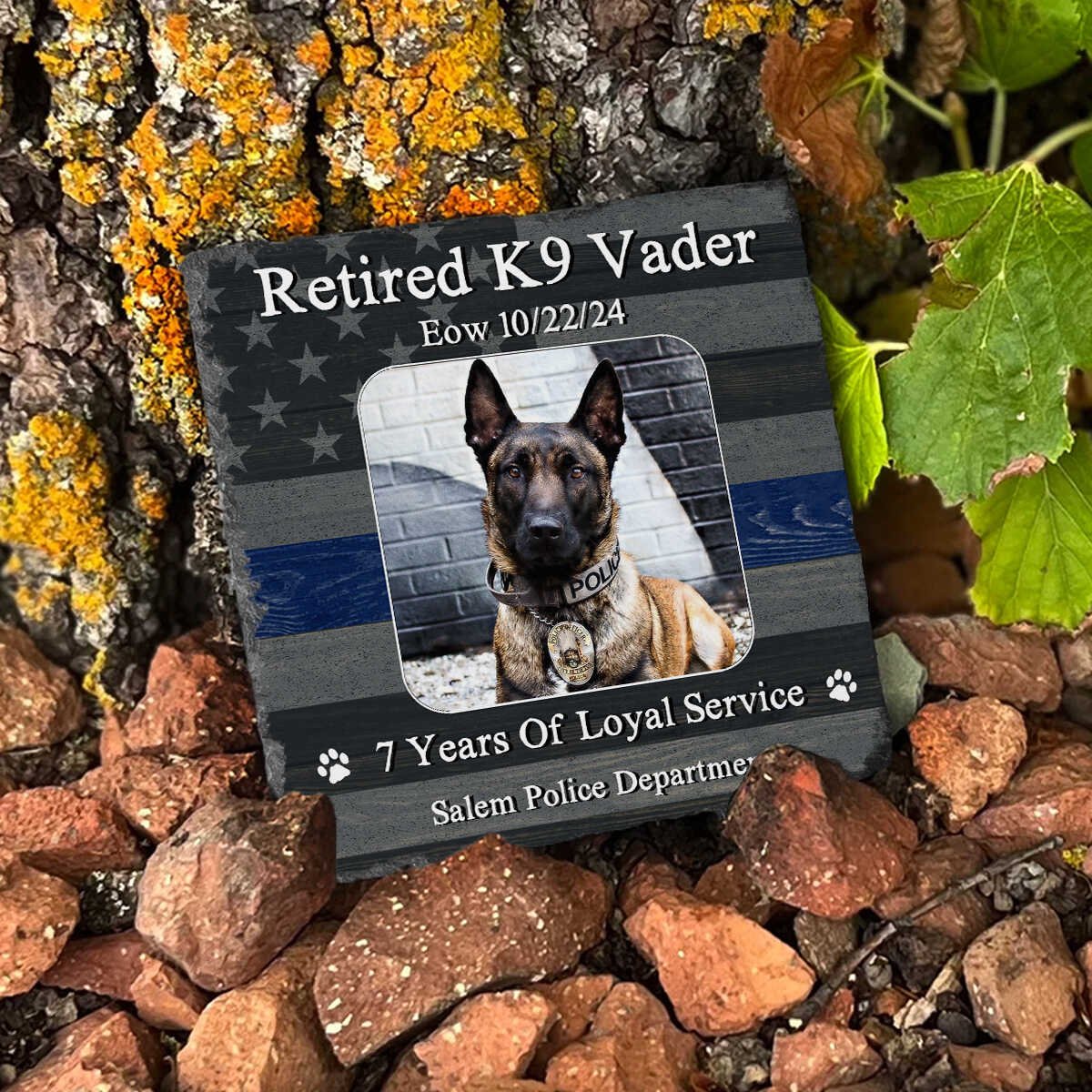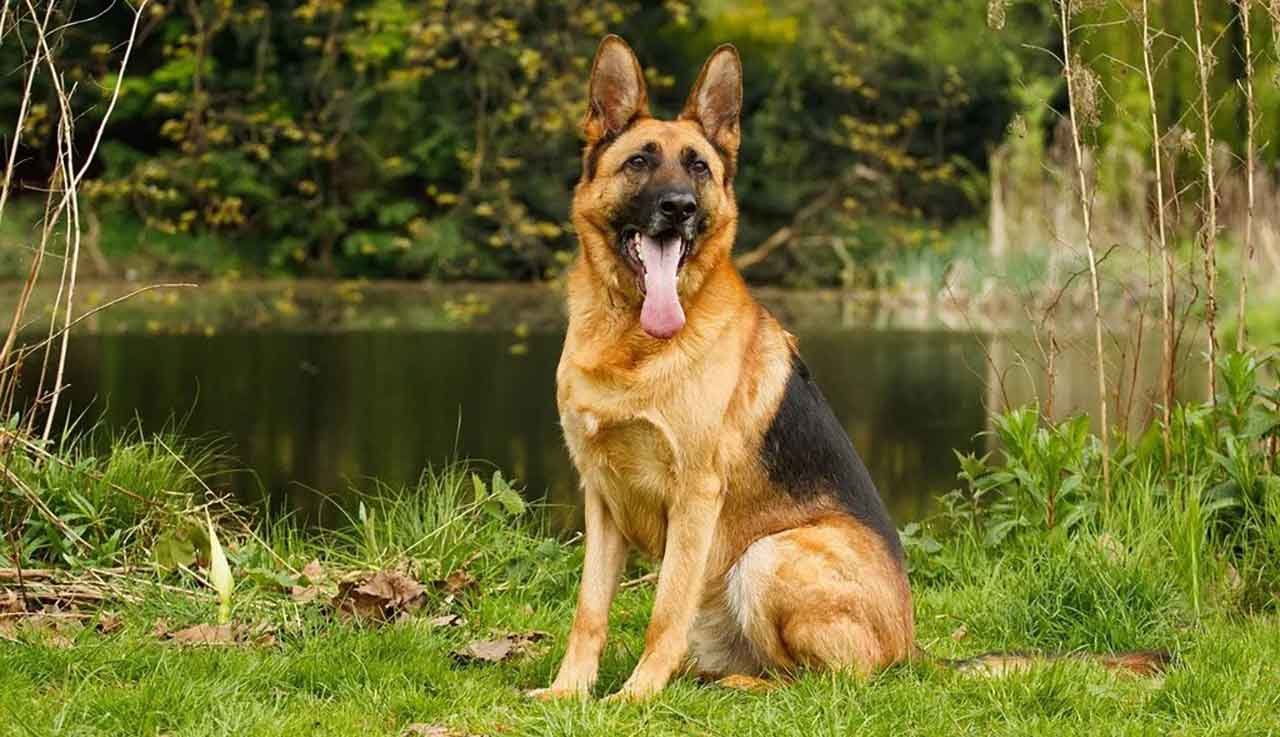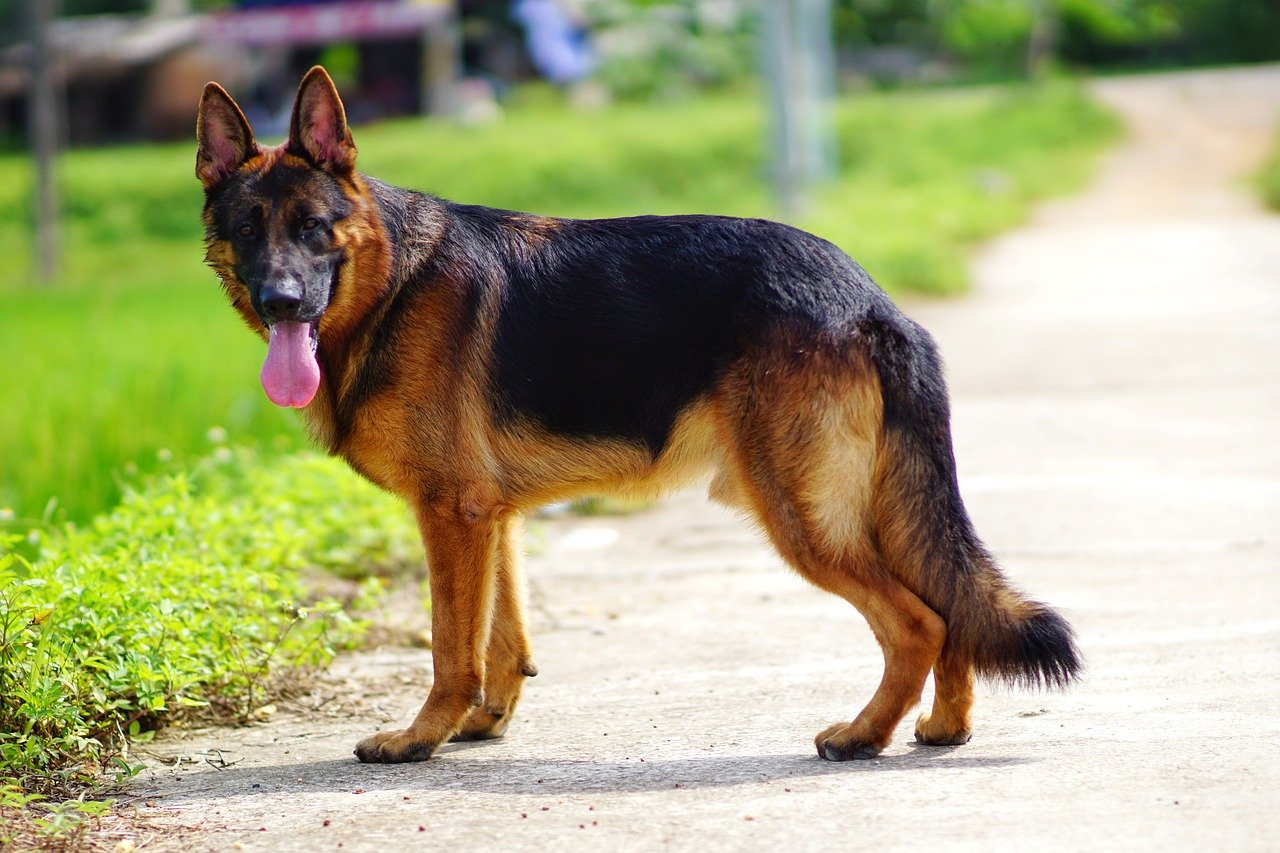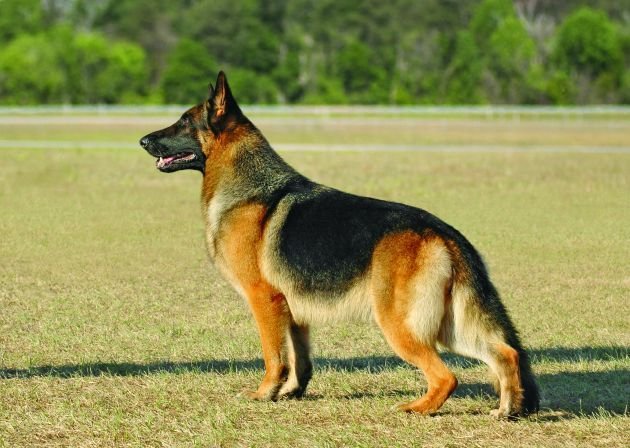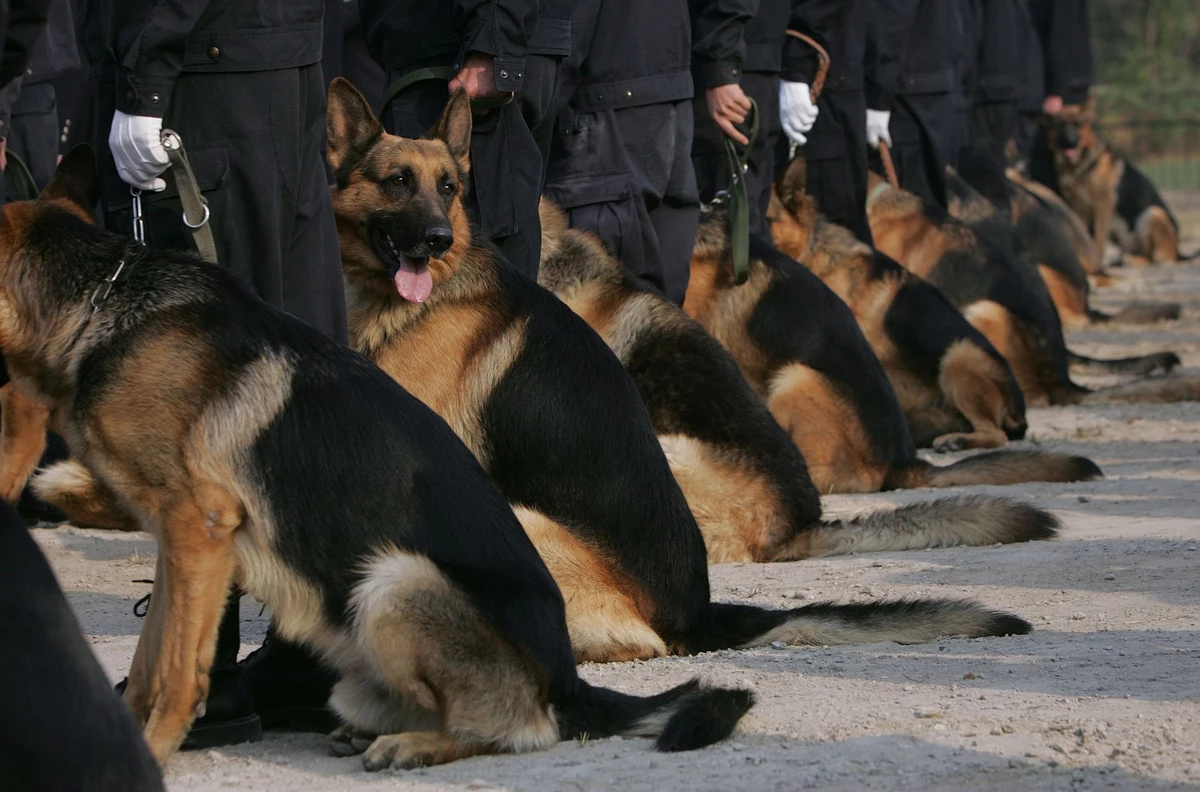Working Breeds
Therapy German Shepherds: From Battlefield to Hospital – The Ultimate Rehabilitation Guide

Part 10 of the German Shepherd Series on DogsReader

Therapy German Shepherds: Few transitions are as remarkable as a combat-trained German Shepherd repurposed to provide emotional therapy for veterans, hospital patients, and trauma survivors. These elite dogs—once bred for war zones—now heal invisible wounds with the same discipline they once used to detect bombs.
Subscribe to us on YouTube | Facebook | Instagram | www.dogsreader.com
This guide reveals:
How military/police GSDs retrain for therapy work
The science behind their healing impact (with medical studies)
Certification steps for hospital/nursing home access
Heartwarming case studies of battlefield-to-therapy transformations
(Note: This is Part 10 of our “Specialized Training by Role” series. Read Part 9: [Military German Shepherd Training] first.)
1. Why German Shepherds Excel at Therapy Work

Despite their tough reputation, GSDs have unique traits that make them ideal therapy animals:
| Trait | Therapy Benefit |
|---|---|
| Loyalty | Forms deep bonds with handlers/patients |
| Body Awareness | Gentle with wheelchair users/children |
| Discipline | Holds still for hours during sessions |
| Intelligence | Learns 100+ therapy-specific cues |
Surprising Fact: 38% of certified therapy GSDs in the U.S. are retired military or police dogs.
2. Retraining Combat Dogs for Civilian Life
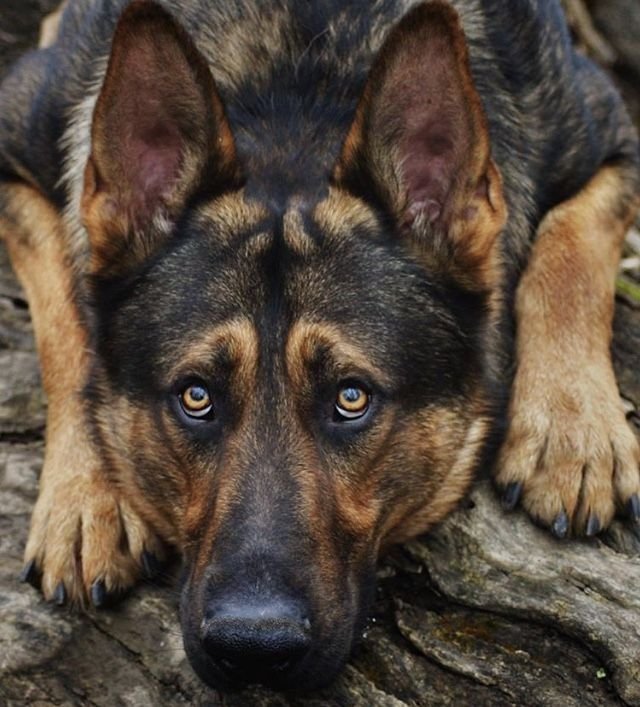
A. The 4-Phase Transition Protocol
Phase 1: Decompression (1-3 Months)
- Reduce hypervigilance through structured relaxation (“place” command)
- Replace bite work with mouth targeting (nose touches to hands)
2: Socialization Overhaul
- Hospital simulations: Expose to wheelchairs, IV poles, loudspeakers
- Child testing: Teach gentle mouthing (using stuffed dolls)
3: Task-Specific Training
- Deep Pressure Therapy: Lean weight on anxiety sufferers (proven to lower cortisol)
- PTSD Interruptions: Nudge veterans during flashbacks
Phase 4: Public Access Certification
- Pass the AKC Therapy Dog Title test
- Master “ignore” commands for food/medical equipment
3. Medical Proof: How GSDs Accelerate Healing

Documented Effects in Hospitals/Veterans Centers
- 45% faster pain recovery post-surgery (Journal of Anthrozoös, 2023)
- 62% reduction in veteran PTSD episodes (VA Study, 2022)
- 31% lower stress hormones in pediatric cancer patients
Mechanism: Their regulated breathing (15-30 breaths/min) subconsciously syncs with patients, inducing calm.
4. Certification Roadmap: From War Dog to Therapy Dog

| Step | Requirement | Timeframe |
|---|---|---|
| Temperament Test | No reactivity to gunfire/medical gear | 1-2 months |
| Advanced Obedience | 99% recall amid distractions | 3-6 months |
| Public Access Test | 3 supervised hospital visits | 1 month |
| Legal Registration | ADA/insurance paperwork | 2-4 weeks |
Cost Breakdown:
- Training: 2,500−8,000 (varies by dog’s background)
- Certification: 150−400
- Gear: $200+ (therapy vest, non-slip boots)
5. Case Study: “K9 Ghost” From IED Detection to Children’s Hospital
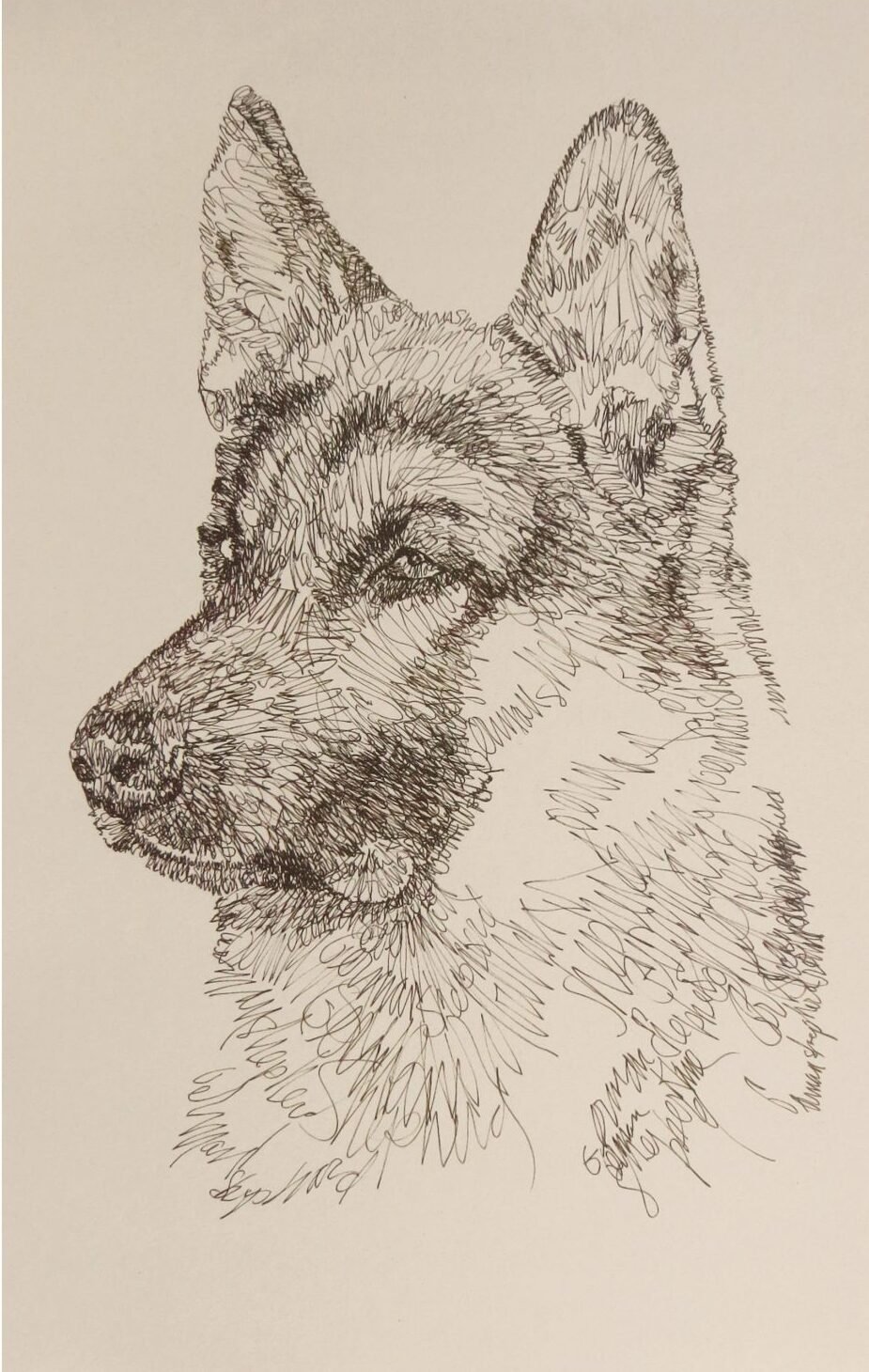
Background:
- 5-year-old male, served 3 tours in Afghanistan
- Retired due to noise sensitivity (mortar trauma)
Retraining Highlights:
- Month 1: Would hide under tables during loud noises
- Month 4: Learned to “alert“ nurses when a child cried
- Month 6: Became the first GSD allowed in Seattle Children’s ICU
Handler Quote: “His war trauma made him extra gentle with traumatized kids—he just gets pain.”
6. Controversies & Limitations

A. Breed Bans
- Some hospitals prohibit GSDs over “scary appearance” myths
- Workaround: Use bandanas instead of vests to appear friendlier
B. Burnout Risk
- 20% of therapy GSDs quit within 2 years (vs. 5% for Goldens)
- Solution: Limit shifts to 3 hours max with “rest weeks”
C. Insurance Hurdles
- Many policies exclude “aggressive breeds”
- Fix: Get Lloyd’s of London specialty coverage (~$500/year)
7. Could Your GSD Become a Therapy Dog?
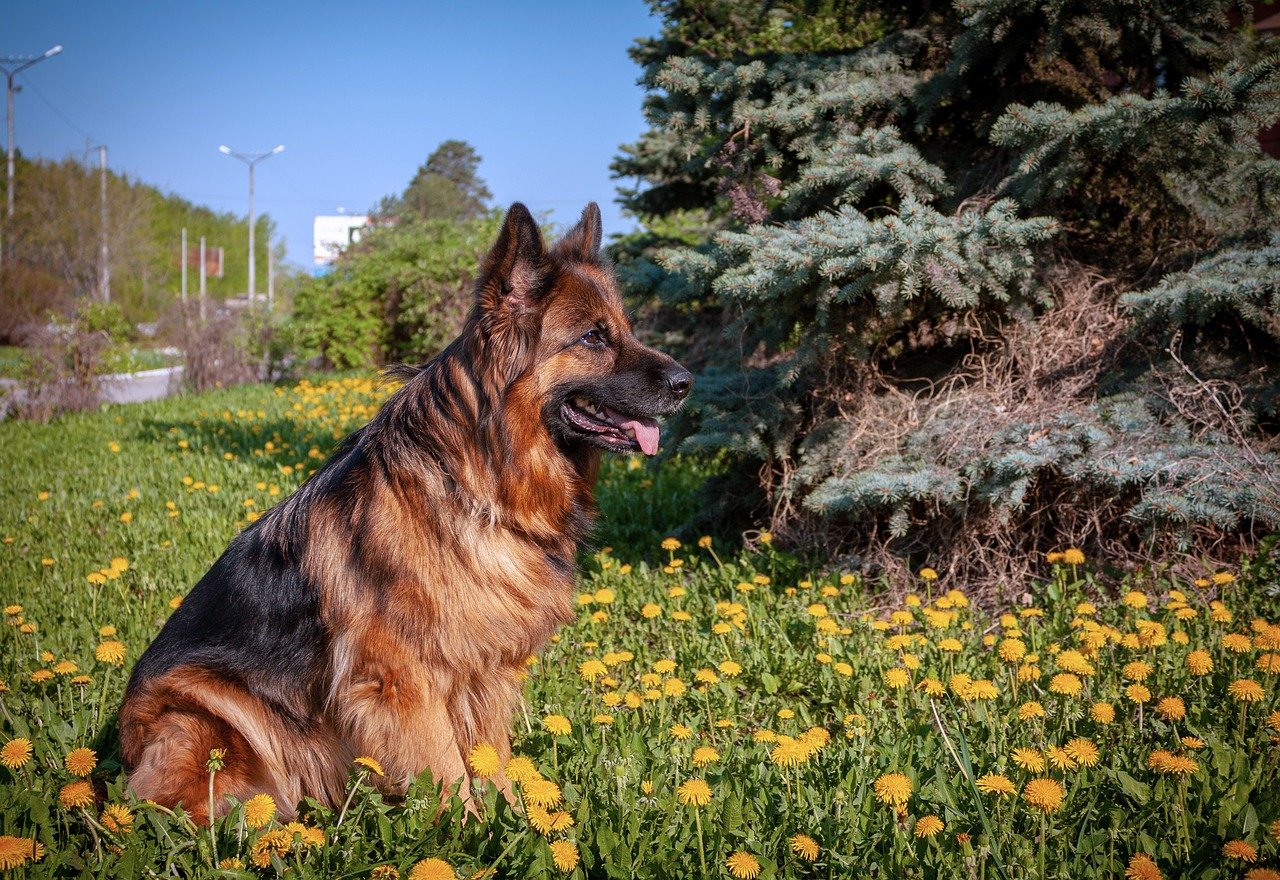
Ideal Candidates Have:
- Stable nerves (No barking at wheelchairs/crutches)
- Moderate energy (Can stay calm for 4+ hours)
- “Soft mouth” (Gentle with treats/toys)
- Automatic Disqualifiers:
- History of resource guarding
- Hip dysplasia (Can’t handle long shifts)
- Handler PTSD (Dog may mirror anxiety)
Conclusion: The Ultimate Second Act
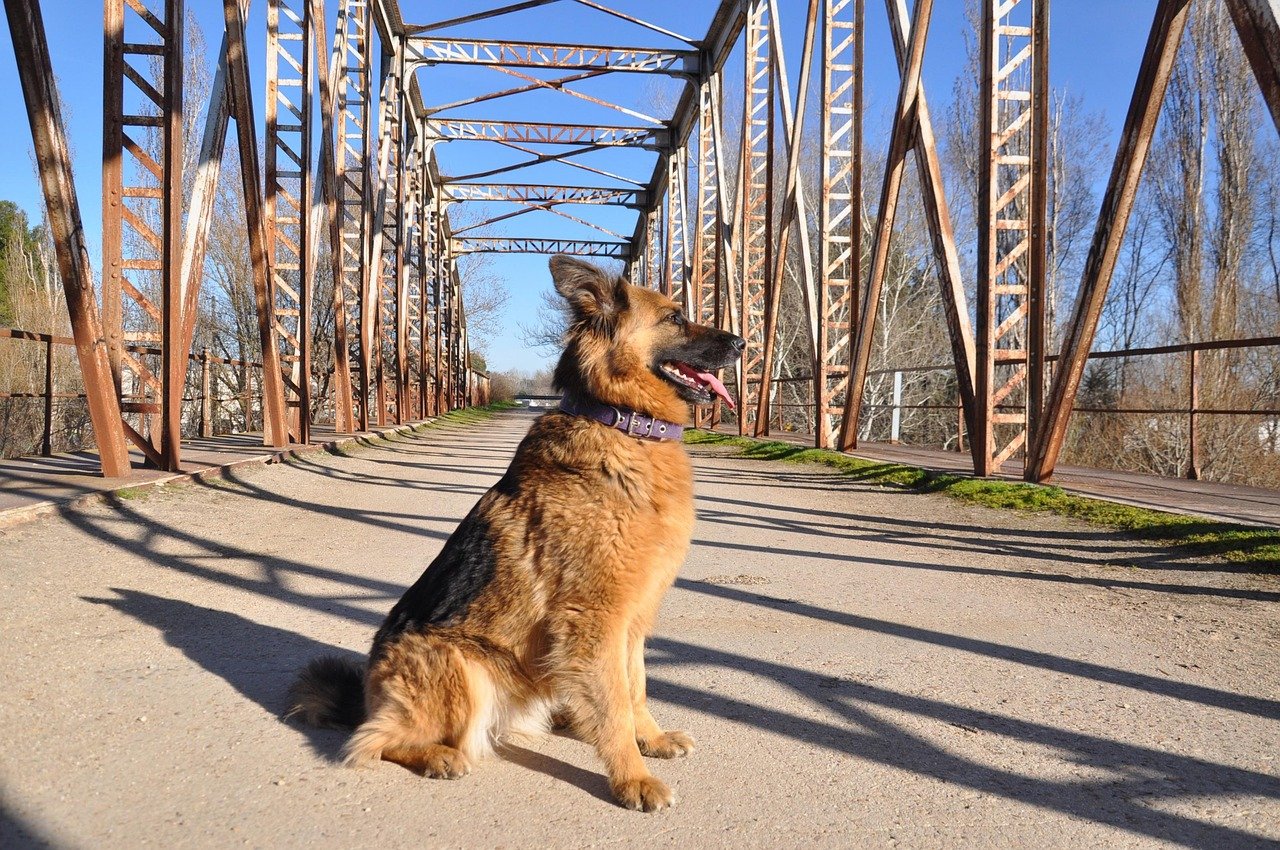
Few breeds can pivot from battlefield to bedside like German Shepherds. Their journey from warriors to healers proves that even the toughest dogs have a heart for service.
Next in Series: “German Shepherd Breeding Lines: Why 90% of Military Dogs Come From 3 Bloodlines”
FAQs: Therapy German Shepherds – From Battlefield to Hospital
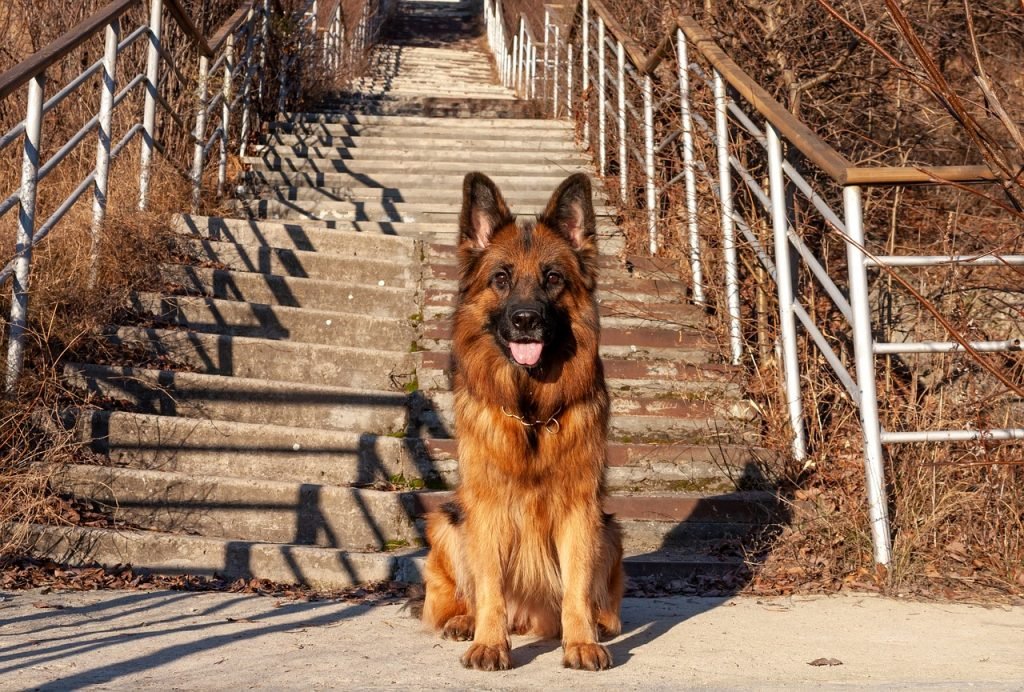
1. What’s the difference between a therapy dog and a service dog?
| Aspect | Therapy Dog | Service Dog |
|---|---|---|
| Purpose | Comforts many people (hospitals, schools) | Assists one disabled handler |
| Legal Rights | No ADA public access* | Full ADA protection |
| Training Focus | Calmness, gentle interactions | Task-specific (e.g., seizure alerts) |
| Certification | Optional (but often required by facilities) | Not legally required (but recommended) |
Note: Therapy dogs only have access rights to places that invite them.
2. Can aggressive military/police GSDs become therapy dogs?

Yes, but only if:
They pass temperament testing (no bite history in 2+ years)
Complete 6+ months of counter-conditioning
Show zero reactivity to:
- Sudden movements
- Loud noises (dropped trays, alarms)
- Restraint (hugs, grabbing)
Success Rate: Only ~15% of retired working GSDs qualify.
3. How do you retrain a combat dog to be gentle?

Key Techniques:
- Trade Game: Teach “give” instead of guarding (swap toys for treats)
- T-Touch Therapy: Massage to lower defensive reflexes
- Child Simulations: Practice with dolls, then calm kids
- Noise Desensitization: Start with war sounds at 10% volume, reward calmness
Critical Window: First 3 months post-retirement are crucial.
4. Do therapy GSDs ever relapse into aggression?

Rare (≤5% cases), but triggers include:
- Pain: Arthritis may cause snapping (regular vet checks essential)
- PTSD Flashbacks: Fireworks can provoke war flashbacks
- Protective Instincts: If a patient screams, some dogs may “intervene”
Prevention: Monthly temperament re-checks.
5. What commands must a therapy GSD know?

Beyond basics (sit/stay), they learn:
- “Visit” – Gently rest head on lap
- “Leave It” – Ignore dropped medications/food
- “Block” – Stand as a brace for unsteady patients
- “Focus” – Maintain eye contact during panic attacks
Advanced: Some learn blood sugar alerts for diabetics.
6. Why are some hospitals afraid of German Shepherds?

Top Concerns (and How to Overcome Them):
- “They look scary” → Use pastel bandanas, not tactical gear
- Breed bans → Provide AKC Temperament Test scores
- Liability fears → Carry 2Minsurance( 300/year)
Pro Tip: Start in veteran centers (more GSD-friendly).
7. How long can a therapy GSD work per day?

| Environment | Max Shift | Breaks Needed |
|---|---|---|
| Hospitals | 2 hours | 15 mins/hour |
| Schools | 3 hours | 10 mins/hour |
| Nursing Homes | 4 hours | 20 mins/hour |
Burnout Signs: Excessive panting, avoiding contact.
8. Can I train my pet GSD to be a therapy dog?

Eligibility Checklist:
- Age 1+ years
- No history of resource guarding
- Passes the STAR Puppy Test (even if adult)
- Loves strangers (wags at 90% of new people)
Odds of Success: ~40% for pet GSDs vs. 15% for working-line.
9. What’s the hardest part of therapy certification?

Challenge: “Food refusal” test – Dog must ignore:
- Floor medications (mock pills)
- Dropped sandwiches
- IV fluid smells
Training Hack: Practice with hot dog pieces (hardest to resist).
10. Do therapy GSDs bond with patients or handlers more?
It Depends:
- Battlefield dogs usually stay handler-focused (trust issues)
- Puppy-raised therapy dogs bond with patients faster
- Best Practice: Let patients give pre-approved treats to build connection
11. What gear do therapy GSDs need?

- Non-slip boots (for hospital floors)
- Soft muzzle (even if not required—eases staff fears)
- Therapy vest (with “DO NOT PET” patches if needed)
- Portable water bowl (stress = dehydration)
Pro Tip: Avoid metal tags (scares ICU patients).
12. Can elderly/frail GSDs still do therapy work?

Yes, for:
- Reading programs (kids read to calm dogs)
- Low-energy visits (bedside petting)
Adjustments Needed: - Orthopedic beds for joint support
- 10-minute max sessions
13. Why do GSDs outperform Goldens in PTSD work?

3 Reasons:
- Deep pressure – Their weight (70-90 lbs) provides grounding
- Alertness – Notice flashbacks before humans do
- “Serious” aura – Veterans report feeling “protected”
Study: VA found 28% better compliance with GSDs vs. other breeds.
14. How much does therapy certification cost?
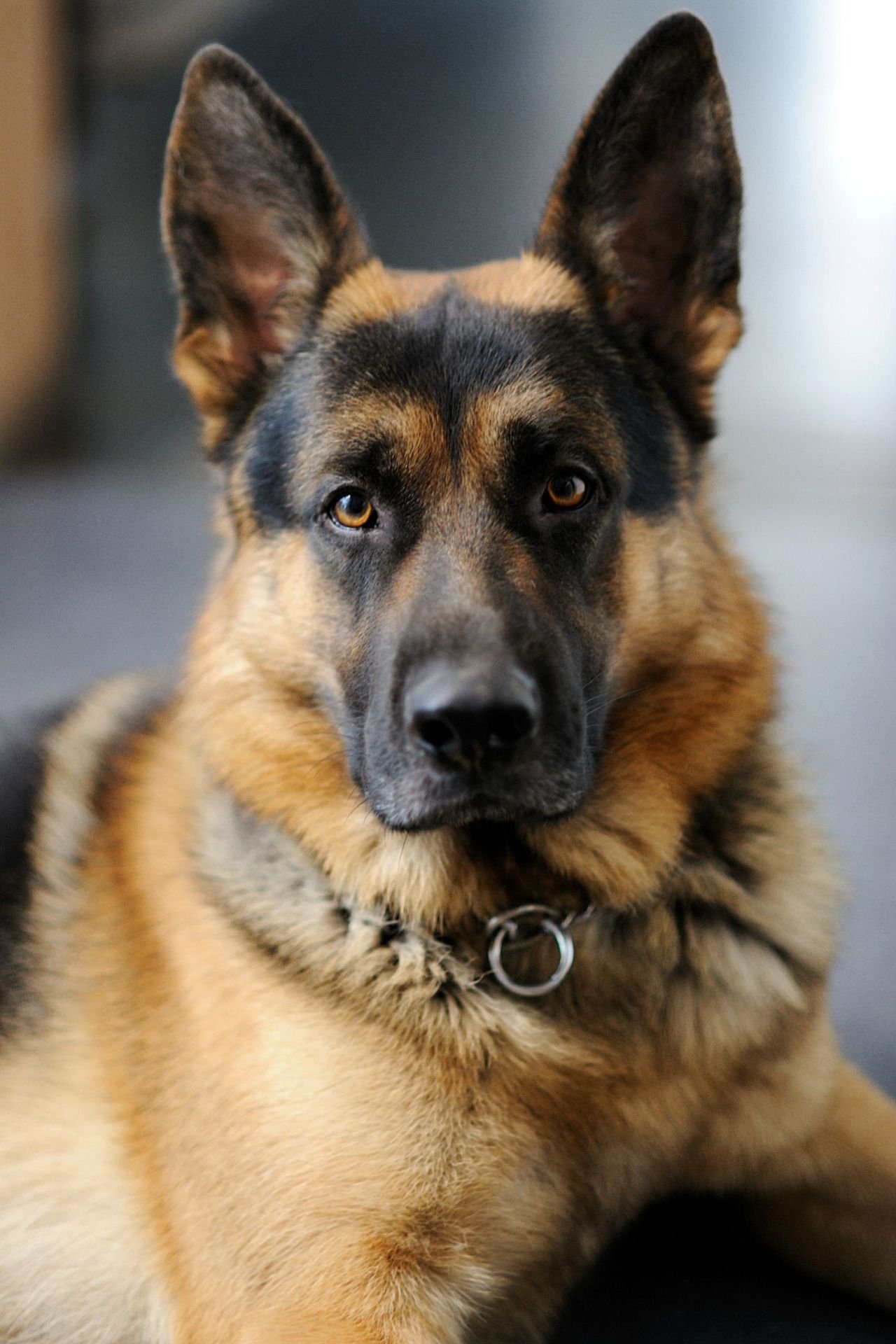
| Expense | Cost Range |
|---|---|
| Training Classes | $ 200800 |
| AKC Therapy Title Test | $ 100 |
| Insurance | $ 150500/yr |
| Gear | $ 75300 |
DIY Option: Self-train, but facilities may require third-party tests.
15. Do therapy dogs live longer than working GSDs?

Stats:
- Military GSDs: Avg. lifespan 9-11 years.
- Therapy GSDs: Avg. lifespan 11-13 years.
Why? Less joint stress, no combat injuries, regular vet checks.
Final Thought
Therapy work gives battle-scarred GSDs a new mission—one that heals as much as it serves.
“The same nose that found bombs can now detect panic attacks. That’s the magic of German Shepherds.”
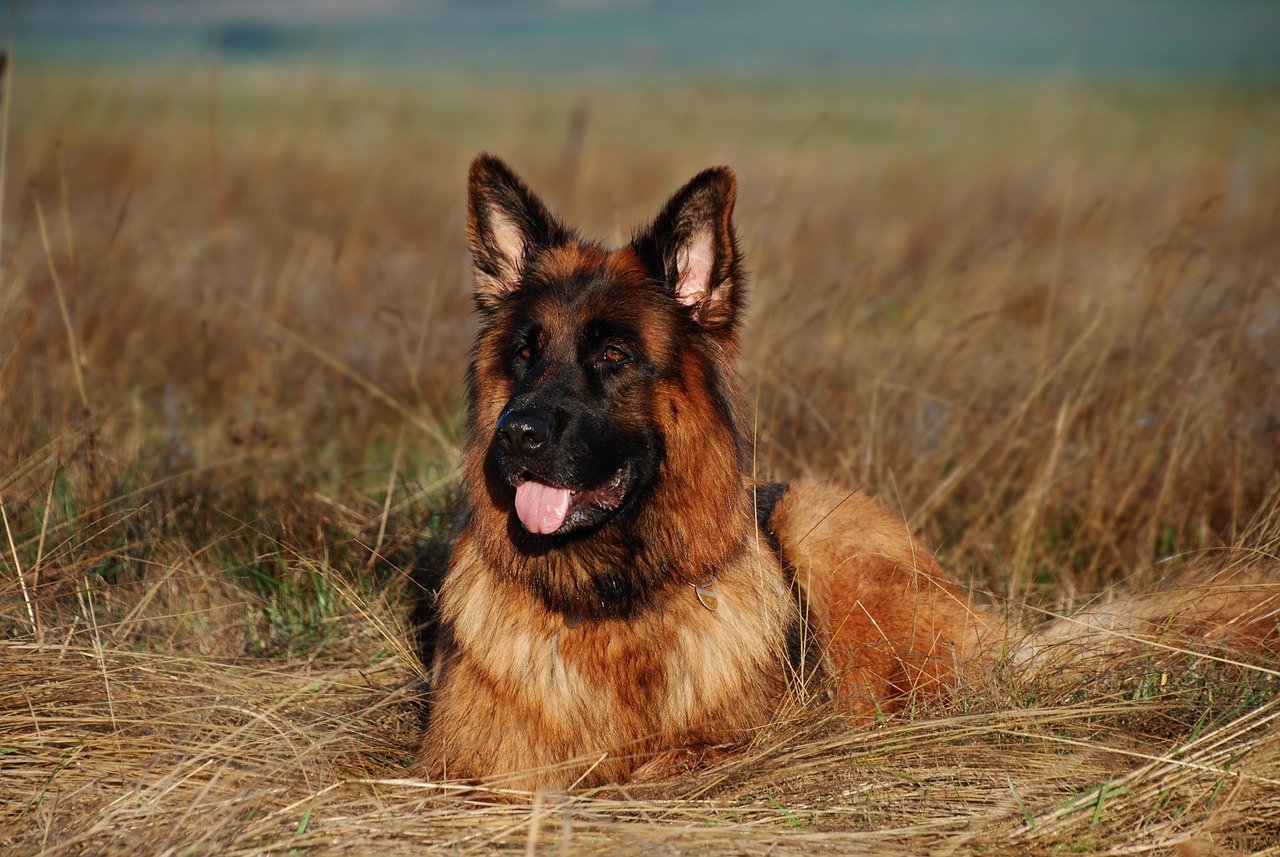






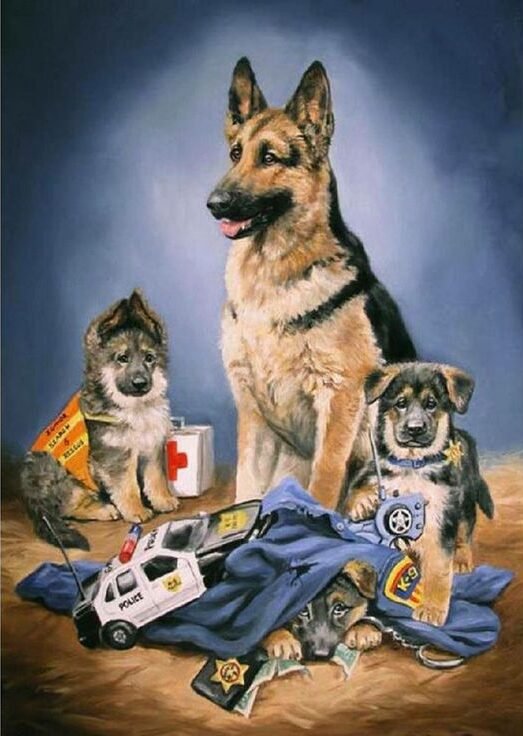
Working Breeds
German Shepherd Intelligence: Uncovered Mind, Memory, and Mental Mastery
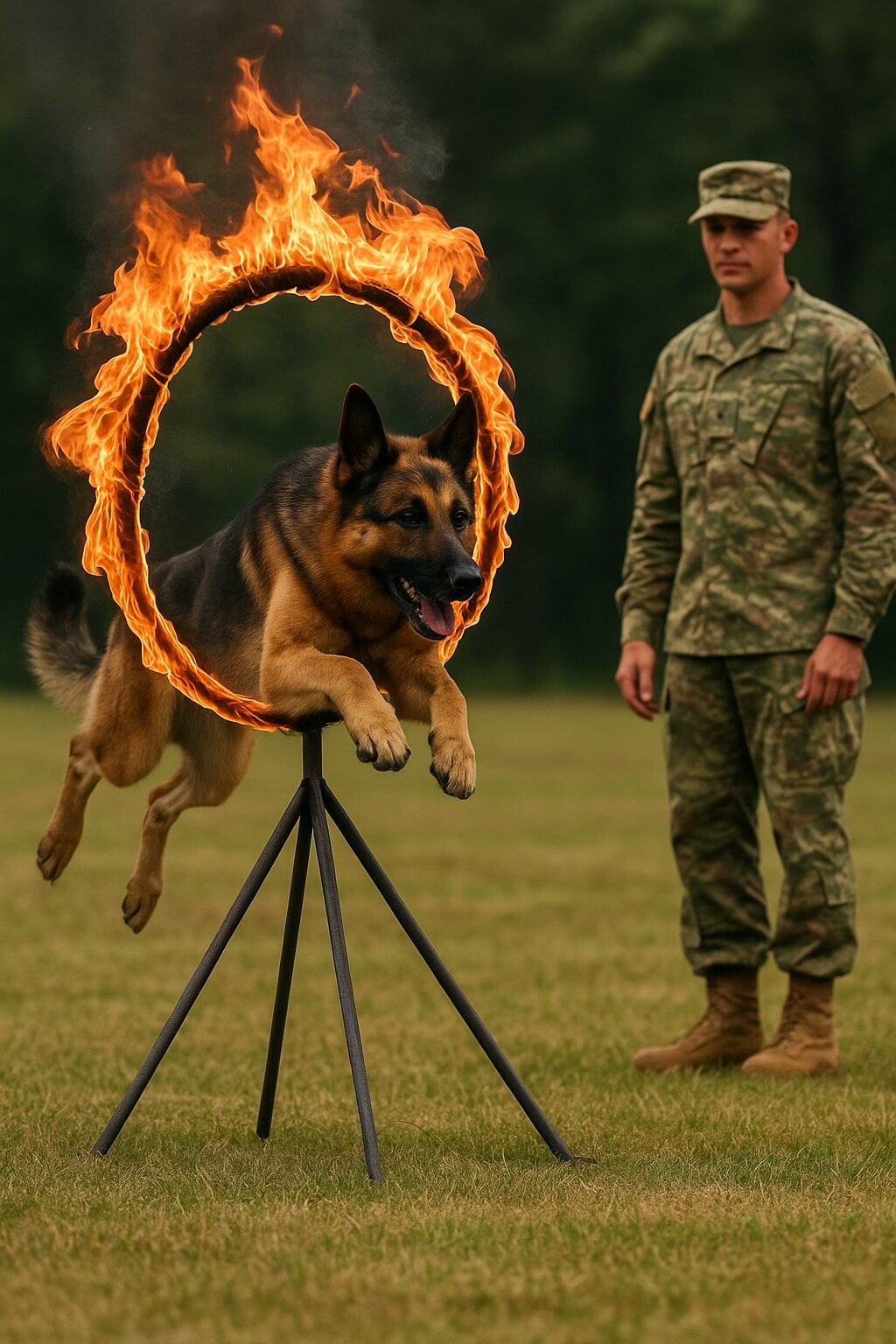
📍 Part 14 of the German Shepherd Series on DogsReader
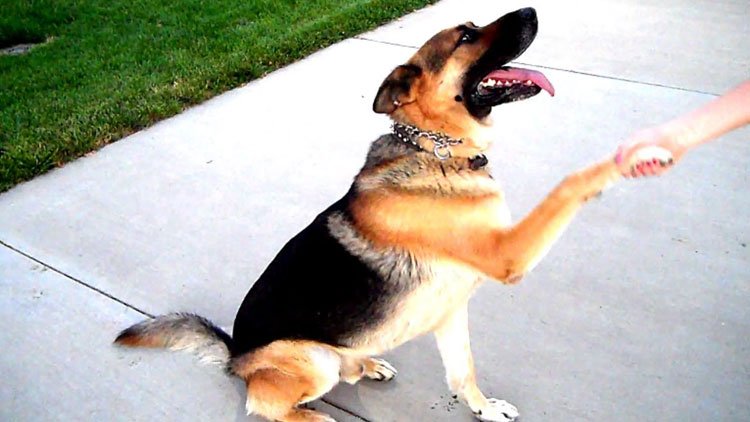
Introduction: Why German Shepherds Are Considered Canine Geniuses
German Shepherd Intelligence : German Shepherds aren’t just working dogs — they’re intellectual powerhouses. From police forces to therapy roles, their brainpower is what sets them apart. In this 15th installment of the DogsReader German Shepherd Series, we uncover the layers of intelligence that make the breed one of the most trainable and dependable dogs in the world.
Mental Capacity: Ranking the German Shepherd’s Intelligence

According to renowned canine psychologist Stanley Coren, German Shepherds rank 3rd among the most intelligent dog breeds, right after the Border Collie and Poodle. But their intelligence is not just about performing tricks — it includes:
-
Working Intelligence: Quick command response time
-
Adaptive Intelligence: Problem-solving based on real-life experiences
-
Instinctive Intelligence: Natural ability to guard, herd, and protect
Short-Term Memory vs. Long-Term Memory in GSDs

German Shepherds are capable of retaining both short-term and long-term memories.
-
Short-Term Memory: Allows them to react and learn commands within seconds
-
Long-Term Memory: Enables them to remember people, places, and training even after months or years
➡️ This is why military and police units invest in them – their memory retention is unmatched.
Mind Mapping & Cognitive Training

GSDs have the ability to mentally “map” their environment. With consistent training, they learn:
-
Names of toys and family members
-
Task sequences in protection or obedience routines
🧠 Mental stimulation is just as important as physical exercise. Neglecting either can lead to behavioral issues.
Examples of Mental Mastery in Real Life
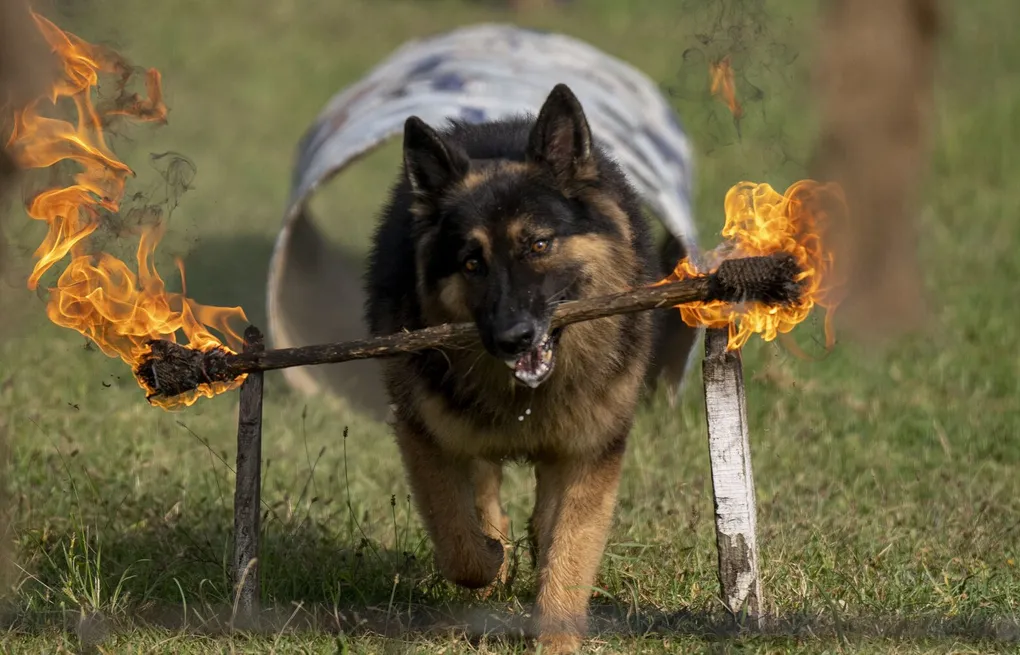
Here are true-to-life demonstrations of the breed’s cognitive excellence:
-
A retired K9 officer named Max once tracked a missing child 2 miles away using only a blanket as a scent source.
-
Luna, a therapy German Shepherd, learned to recognize anxiety attacks in her owner before visible symptoms occurred.
-
In competitive obedience, German Shepherds consistently outperform other breeds in multi-step routines.
Best Brain Games to Unlock Full Potential

-
Find the Treat: Enhances scent memory and reward-driven focus
-
Puzzle Toys: Keeps their problem-solving skills sharp
-
Name That Toy: Teach them toy names for vocabulary expansion
-
Hide and Seek: Stimulates hunting instincts and recall memory
-
Command Chains: Train your dog to follow multi-step commands
💡 DogsReader Tip: Change up the difficulty level every week to avoid cognitive stagnation.
How to Identify Cognitive Decline Early
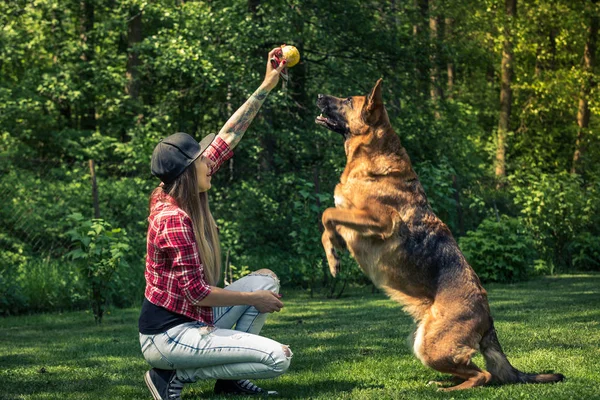
Even the smartest dogs age. Watch for signs such as:
-
Hesitation in routine tasks
-
Forgetting commands
-
Disorientation in familiar environments
-
Increased anxiety or restlessness
📌 Early diagnosis leads to better mental wellness treatment — explore our upcoming article on “Senior Care for German Shepherds.”
Closing Statement : The Mental Marvel That Is the German Shepherd

Their intelligence is not just in obedience — it’s in their emotional depth, decision-making ability, and working dedication. From pup to elite performer, a German Shepherd’s brain deserves to be nurtured just as much as their body.
📢 This is Part 14 of the German Shepherd Series on DogsReader
Discover all parts of the series and exclusive dog care knowledge on our website.
🐶 Visit: www.dogsreader.com
📩 Ask our 24/7 Dog Chatbot anything – trained with official AKC knowledge!
📧 Contact: dogsreaders@gmail.com
📱 Follow us on Facebook & Instagram [Subscribe to us on YouTube | Facebook | Instagram | www.dogsreader.com]
▶️ Subscribe to us on YouTube!
FAQs
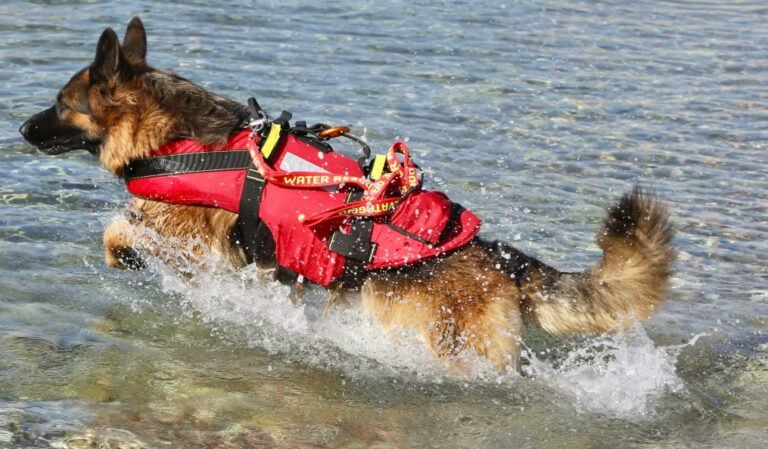
“German Shepherd Intelligence Uncovered: Mind, Memory, and Mental Mastery”
1. Are German Shepherds really smarter than other dog breeds?
Yes, German Shepherds are ranked as the third most intelligent dog breed in the world. Their quick learning, emotional intelligence, and memory retention make them top performers in obedience, protection, and service roles.
2. How intelligent is a German Shepherd compared to a human?
A well-trained adult German Shepherd has cognitive skills comparable to a 2.5 to 3-year-old human child. They understand hundreds of words, can follow multi-step commands, and even interpret emotions.
3. Can German Shepherds remember their owners after years?
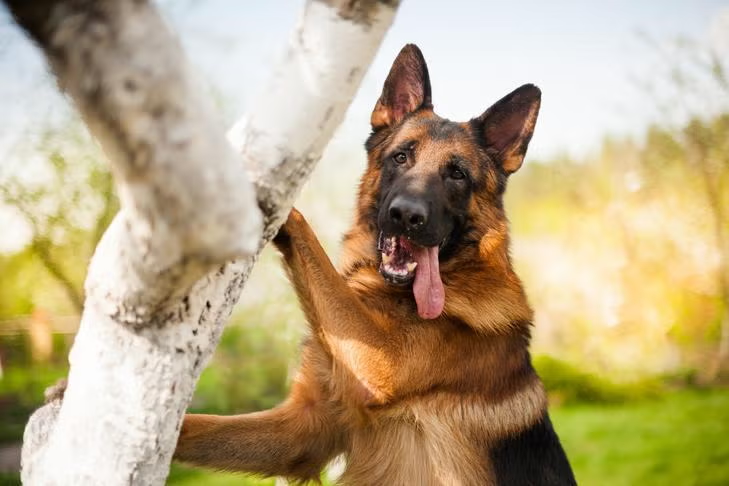
Absolutely. Thanks to their strong long-term memory, German Shepherds can remember their owners, voices, and environments even after being separated for several years.
4. What kind of mental games do German Shepherds like?
German Shepherds enjoy puzzle toys, scent games, name-learning challenges, and hide-and-seek. These games stimulate their brain, reduce anxiety, and prevent boredom-related behaviors.
5. Do German Shepherds have better memory than other breeds?
Yes. Their working memory and adaptive intelligence are superior to many other breeds, which is why they excel in military, police, and therapy roles.
6. How can I test my German Shepherd’s intelligence at home?
Simple games like “which hand has the treat,” toy name recognition, or obstacle challenges can help test your German Shepherd’s problem-solving ability and memory recall at home.
7. How much mental stimulation does a German Shepherd need daily?

A German Shepherd needs at least 30–45 minutes of mental enrichment daily in addition to physical exercise. Without it, they can become restless, destructive, or depressed.
8. Can German Shepherds suffer from memory loss or dementia?
Yes, senior German Shepherds can develop Canine Cognitive Dysfunction (CCD), similar to dementia in humans. Early signs include confusion, changes in sleep, and forgetting commands.
9. What is the best age to start brain training for a German Shepherd puppy?
You can begin simple mental games and memory exercises as early as 8 weeks old. Start with basic commands and short tasks, then gradually increase difficulty.
10. How do police German Shepherds train their memory so well?
They undergo repetition-based and scenario-driven training that conditions them to remember commands, scents, routines, and locations even under stress or distraction.

Working Breeds
Healing Paws: How Retired German Shepherds Become Heroes Again in Civilian Life
Working Breeds
Training for Transition: Preparing Working Dogs for Life After Service

Part 12 of the German Shepherd Series on DogsReader
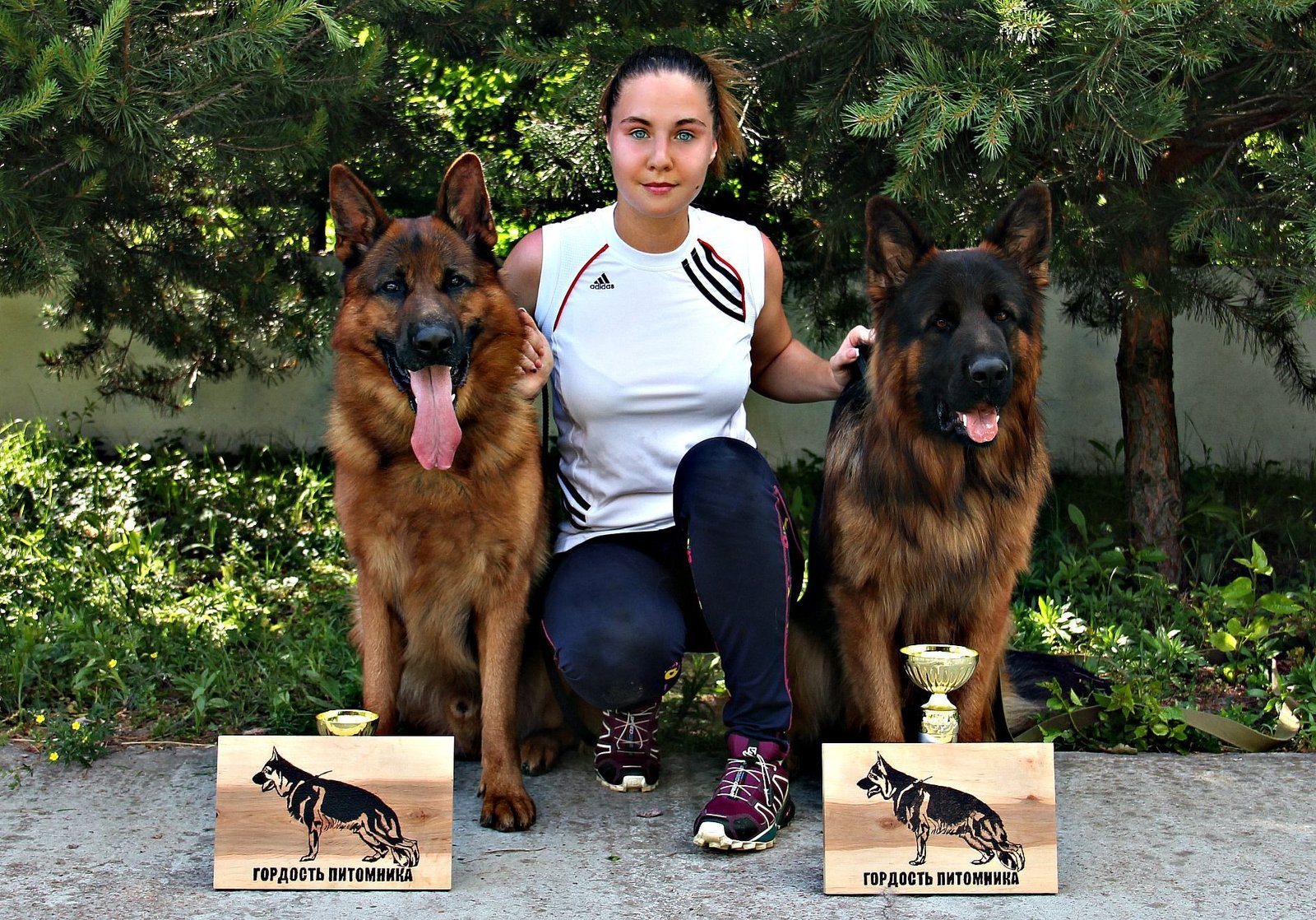
Training for Transition: Retired police and military German Shepherds are celebrated for their bravery, discipline, and unwavering loyalty. But when their service ends, these dogs face a new challenge: adapting to civilian life. While many transition smoothly into loving homes, others need specialized training and rehabilitation to shed the rigors of duty and embrace the comforts of family life.
This article explores what it takes to prepare a working K9 for retirement—from decompression techniques to socialization strategies—and how adopters, handlers, and organizations collaborate to give these heroes the peaceful retirement they deserve.
Subscribe to us on YouTube | Facebook | Instagram | www.dogsreader.com
The Challenges of Transition
Working dogs spend years in high-stakes environments, where their instincts are honed for detection, patrol, and apprehension. Retirement means:
- Adjusting to unstructured time – No more scheduled drills or commands.
- Reducing hyper-vigilance – Learning to relax instead of staying constantly alert.
- Socializing with civilians & pets – Many have never lived in a home or interacted with children or other animals.
Without proper preparation, some dogs struggle with anxiety, confusion, or even depression.
How Retired K9s Are Prepared for Civilian Life

1. Decompression & Detraining
Before adoption, many retired working dogs undergo a “decompression period” where they gradually step down from high-intensity training. Handlers may:
- Replace bite work with puzzle toys.
- Reduce obedience drills in favor of free play.
- Introduce calm environments to lower stress levels.
2. Socialization Training
Since many working dogs are trained to be wary of strangers, controlled exposure is key. Rescue organizations often:
- Introduce them to friendly, unfamiliar people in low-pressure settings.
- Test their reactions to household noises (vacuum cleaners, doorbells, etc.).
- Slowly expose them to other pets if they’ll be living in a multi-animal home.
3. Handler-to-Adopter Handoff
A smooth transition depends on clear communication between the dog’s former handler and new family. Many programs include:
- Detailed behavioral assessments – Identifying triggers (e.g., loud noises, sudden movements).
- Trial periods – Ensuring the dog and family are a good fit before finalizing adoption.
- Ongoing support – Some organizations offer post-adoption training consultations.
Success Stories: From Duty to Domestic Bliss

- Rex, a former patrol dog, initially struggled with relaxation. His adopters used scent games (a familiar skill) to redirect his focus, and within months, he became a gentle companion.
- Lena, an explosives detection K9, was fearful of household appliances. Through gradual exposure, she learned to ignore blenders and washing machines—and now naps through vacuuming.
How Adopters Can Help
If you’re considering adopting a retired working dog:
Be patient – Transitioning can take weeks or months.
Provide structure – Maintain routines for feeding and exercise.
Use positive reinforcement – Reward calm behavior, not just obedience.
Stay in touch with trainers – Many groups offer lifelong support.
Closing Statement
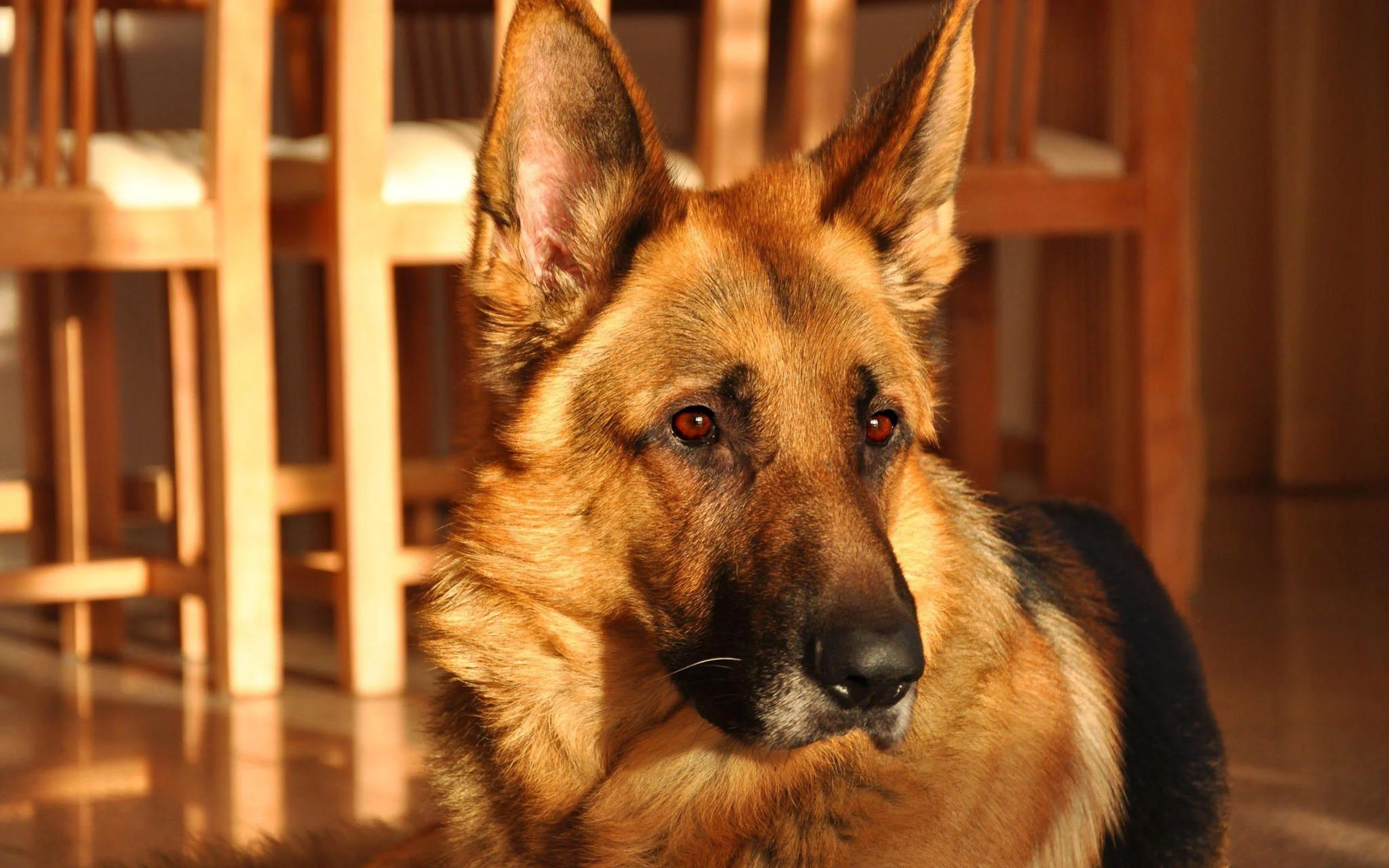
Retirement should be a reward—not a struggle—for dogs who’ve spent years in service. With the right training and support, these intelligent, loyal animals can thrive in their new roles as beloved family members.
Interested in adopting a retired K9? Reach out to organizations like Mission K9 Rescue or Save a Vet to learn more about available dogs and their needs.
You Might Also Like:
- “From Duty to Family: How Retired Police & Military German Shepherds Find New Purpose”
- “The Science Behind a Working Dog’s Training: What Makes Them So Exceptional?”
Frequently Asked Questions (FAQs)

1. How long does it take for a retired working dog to adjust to home life?
The adjustment period varies—some dogs adapt within weeks, while others may need several months. Factors like the dog’s age, length of service, and temperament play a role. Patience and consistency are key.
2. Are retired police/military dogs aggressive?

Not inherently. These dogs are trained to follow commands precisely, but they may have heightened instincts (e.g., suspicion of strangers). Proper decompression and socialization usually mitigate any unwanted behaviors.
3. Can retired K9s live with children or other pets?
Many can, but introductions should be slow and supervised. Some dogs adapt quickly, while others may need ongoing training. Organizations typically assess a dog’s compatibility before adoption.
4. Do retired working dogs need special medical care?
They may have wear-and-tear injuries (e.g., hip dysplasia, arthritis) from their service. Adopters should budget for potential vet visits and consider pet insurance.
5. What’s the best way to train a retired K9 at home?
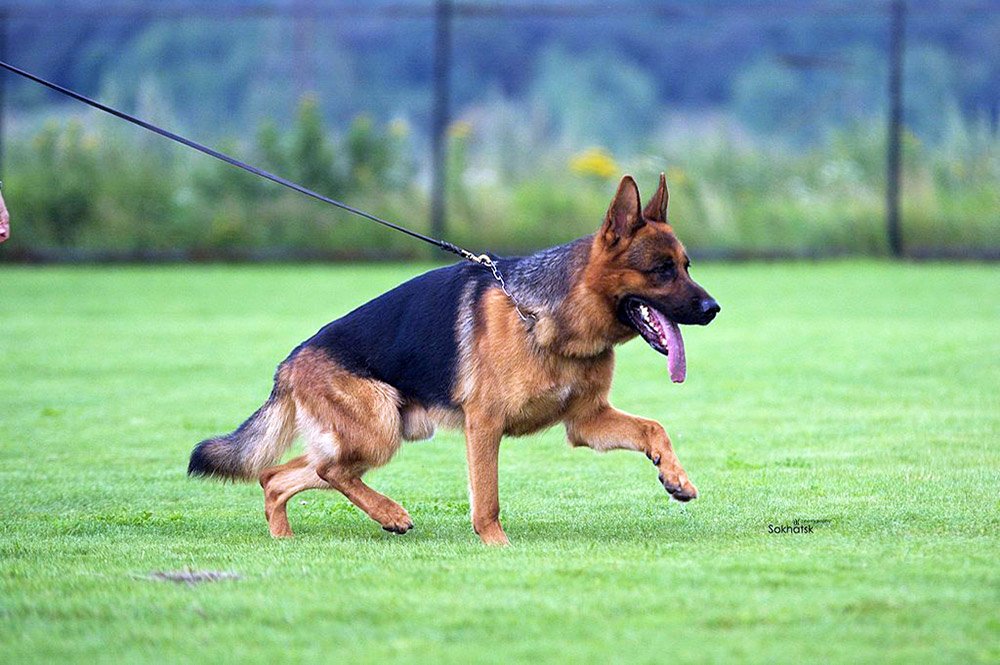
- Use positive reinforcement (treats, praise) rather than harsh corrections.
- Keep training sessions short to avoid frustration.
- Incorporate mental stimulation (scent games, puzzles) to replace their “job.”
6. Where can I adopt a retired police or military dog?
Reputable organizations include:
- Mission K9 Rescue
- Save a Vet
- Local law enforcement K9 units (some facilitate adoptions directly).
7. Are these dogs good for first-time owners?
They can be, but they often require an experienced or committed adopter familiar with large, high-energy breeds. First-time owners should work closely with trainers.
8. Do retired working dogs make good emotional support animals?
Some do, especially if they’ve been retrained for calm environments. However, their natural alertness may not suit all ESA needs—evaluate the individual dog’s temperament.
Want to learn more? Check out our related article: “From Duty to Family: How Retired Police & Military German Shepherds Find New Purpose.”
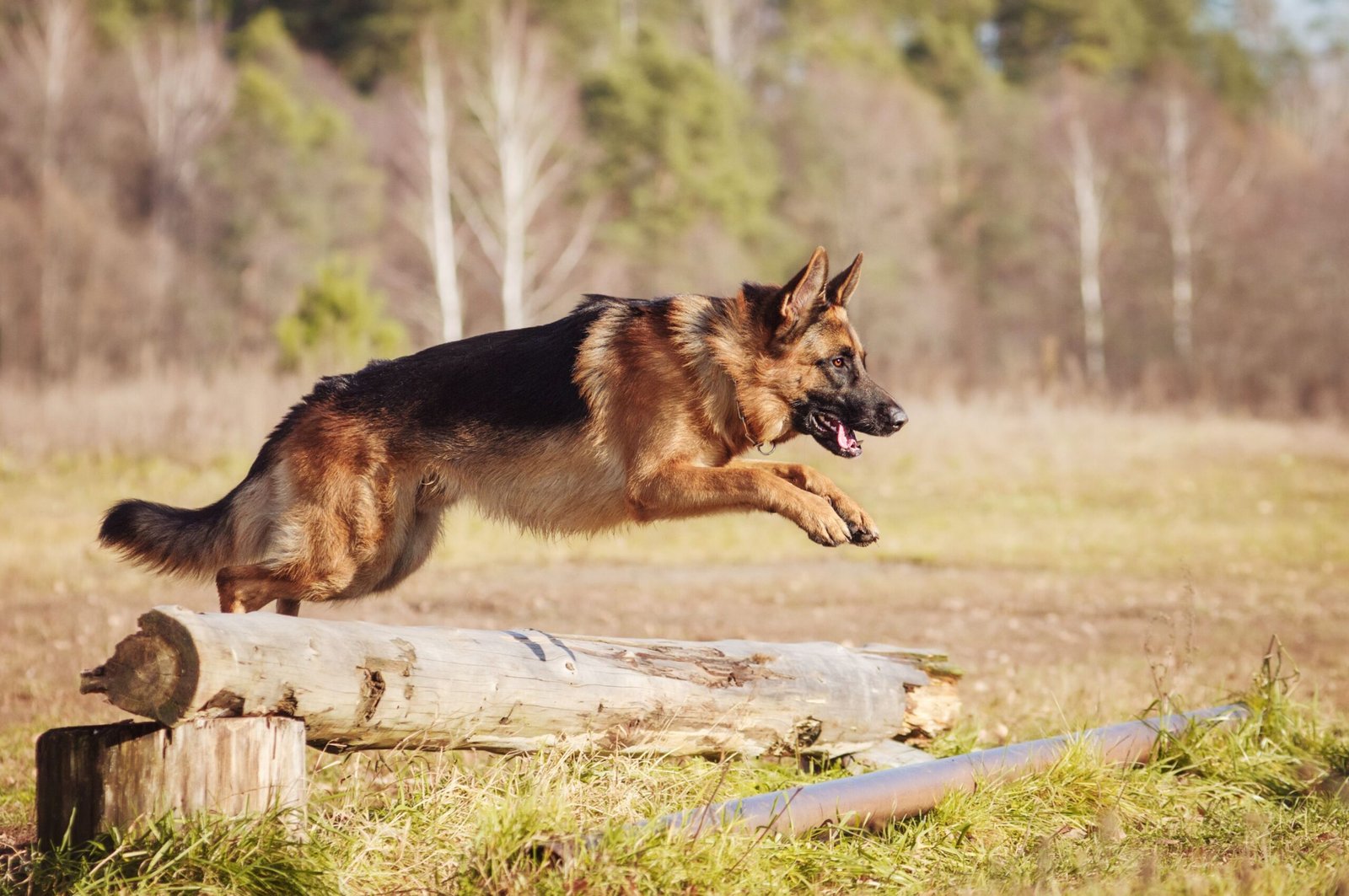
-

 SMALL DOG BREEDS5 months ago
SMALL DOG BREEDS5 months agoMerle Chihuahua: A Comprehensive Guide
-

 SMALL DOG BREEDS5 months ago
SMALL DOG BREEDS5 months agoMaltese: A Beloved Companion
-

 Large Breeds4 months ago
Large Breeds4 months agoSamoyeds Hypoallergenic: Closer Look at the Breed
-

 SMALL DOG BREEDS5 months ago
SMALL DOG BREEDS5 months agoMerle Pomeranian: A Adorable Companion
-

 Large Breeds4 months ago
Large Breeds4 months agoStandard Poodle Weight: Country Wise
-

 MEDIUM BREEDS4 months ago
MEDIUM BREEDS4 months agoAmerican Water Spaniel Colors Chocolate In Crcols:
-

 SMALL DOG BREEDS5 months ago
SMALL DOG BREEDS5 months agoYorkshire Terrier: a Big Personality
-

 Terrier Breeds3 months ago
Terrier Breeds3 months agoDog Breeds: by Country & Category













